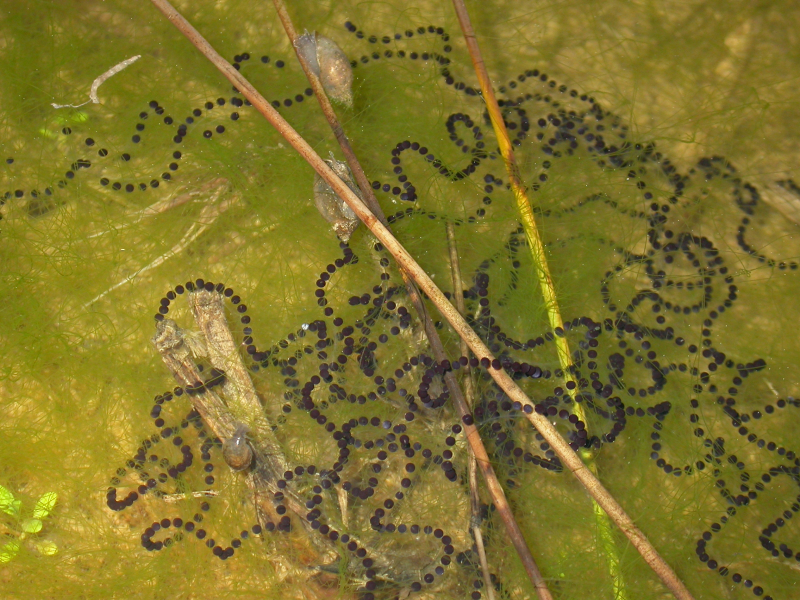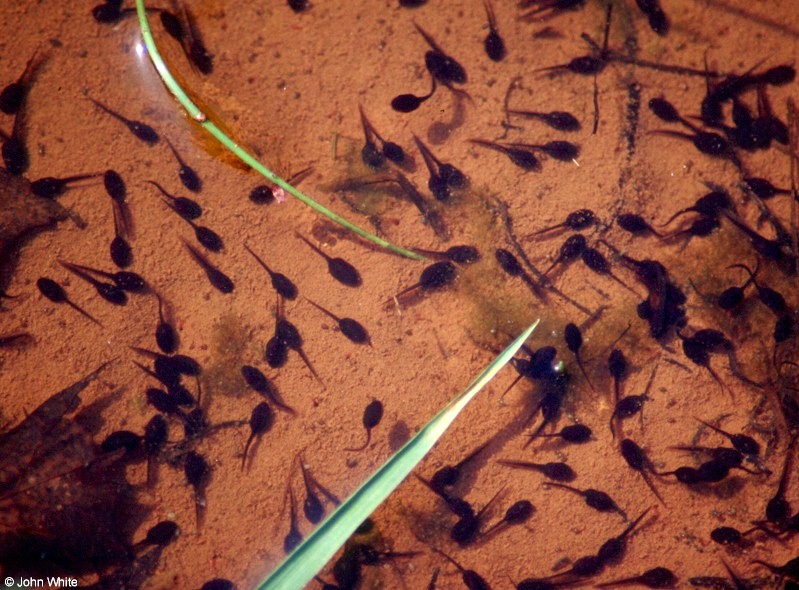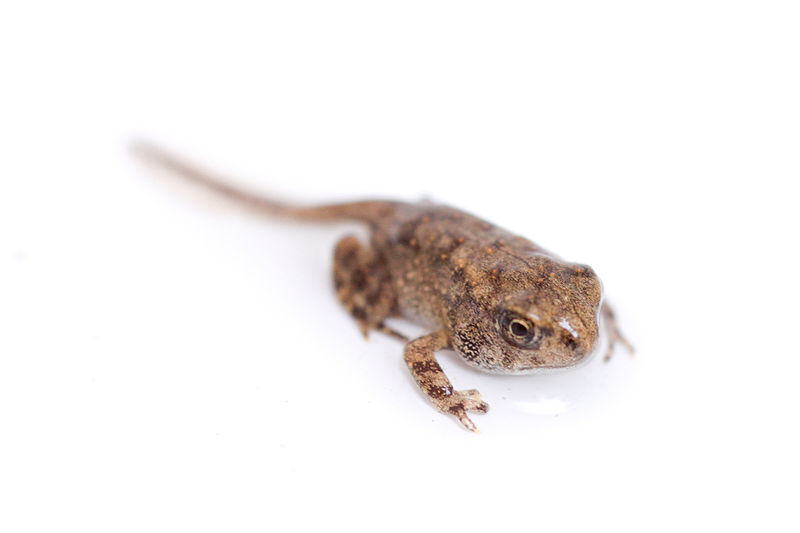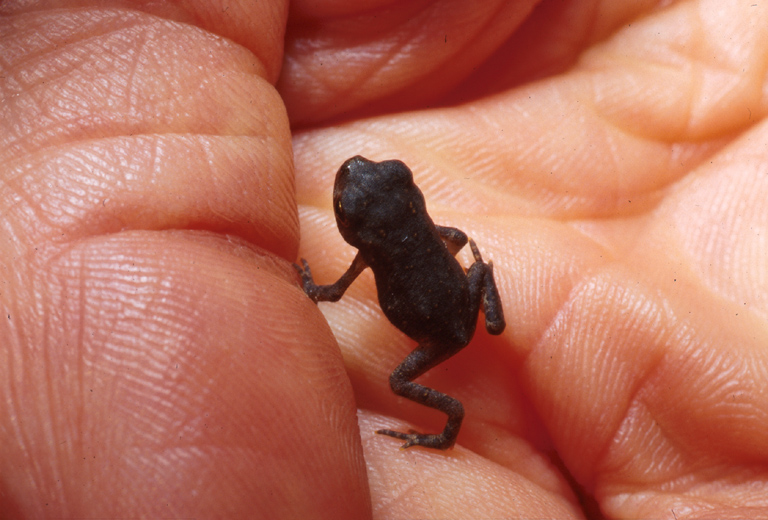Reproduction
The male toad has larger front legs than
the female toad for an easier grasp during amplexus, the position toads perform during sex. The male toad also has rough pads on
their first and second toes so mounting is more efficient. Although
the male has longer front legs, the female tends to be relatively
larger than the male. As you can see from the picture, the female on
the bottom is much larger than the male.
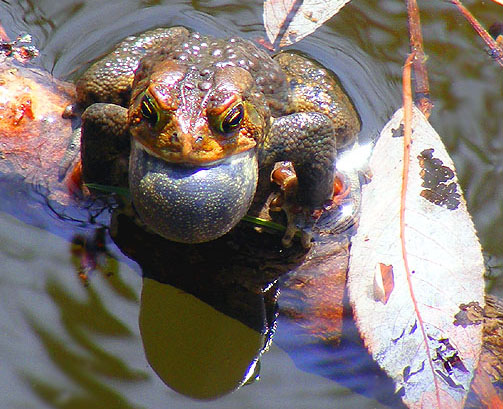
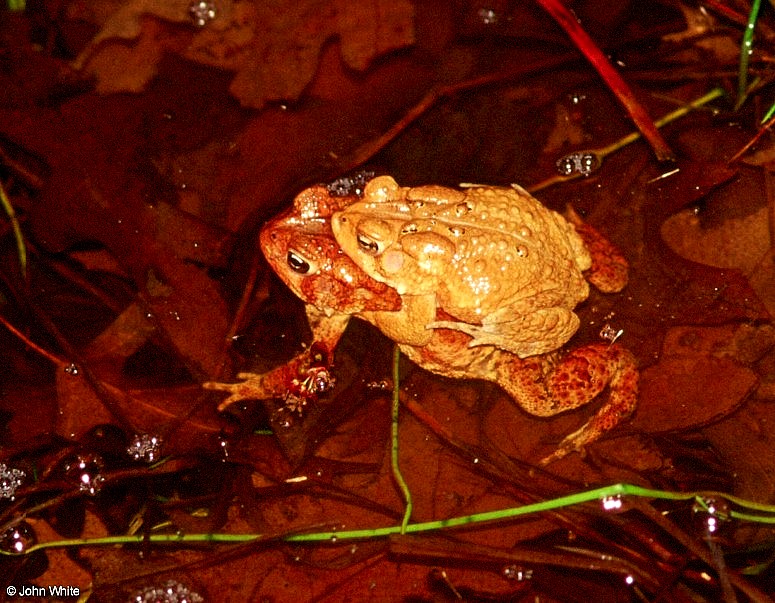
In order for successful reproduction, the female must be attracted to a male. This is done through mating calls. The male toads let off a series of high pitched calls by expanding the vocal sac under the chin. Because of the constant expansion and reduction of this sac, males tend to have darkened chins. The picture above shows the full expansion of the sac. Below is a video of an American Toad mating call. Video by Ryan M. Bolton, for more videos by Ryan, visit his website.
The male will produce these sounds in varying months,
from February to May, depending on the region, temperature and
humidity. It is believed that male toads will congregate into
groups of up to 30 to increase the likeliness of a female responding
to their calls. A study showed that females tend to favor
larger than average males. Also, they choose males based on
unique characteristics of calls. If a female toad is not
properly courted and does not get attracted to a particular toad,
she may keep her eggs internally and not release them that season.
For this reason, the female toad is somewhat picky when choosing a
mate.
When a female chooses her mate, they engage in
amplexus. The male rests his toes right behind her forearms.
The female then releases her eggs and the male secretes a sperm-like
fluid to fertilize the eggs. Because this is done outside the
body, it is called external fertilization. A typical clutch
size is anywhere from 3,000 to 20,000 eggs. The eggs are
arranged in a double string underwater. They typically attach
to vegetation for increased support. A gelatinous transparent
film covers the string for protection while the eggs develop into
tadpoles. Below, you can see the double string surrounding a
parent toad. These eggs are typically 1-2 mm in diameter.
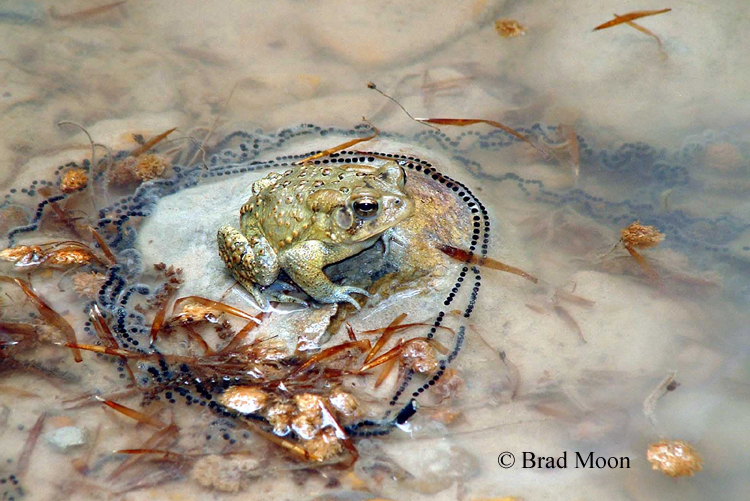
All amphibians undergo metamorphosis, the
abrupt physical stages of an egg to an adult. The developing eggs
incubate for about 2 weeks until they hatch into a shallow body of
water. The young tadpoles have gills and a tail but no legs.
They are mostly herbivorous, feeding on plant material.
However, sometimes they feed on detritus and even dead tadpoles,
classifying them as omnivores.Once they reach 12 weeks old, they start to feed on
small insects. They grow legs, lose their tail and are now
called toadlets. Growth continues and they eventually move to
a terrestrial habitat until they reach sexual maturity anywhere from
1 to 3 years. The pictures below show the stages of metamorphosis;
from egg to tadpole, tadpole to toadlet, and toadlet to a mature
toad.
